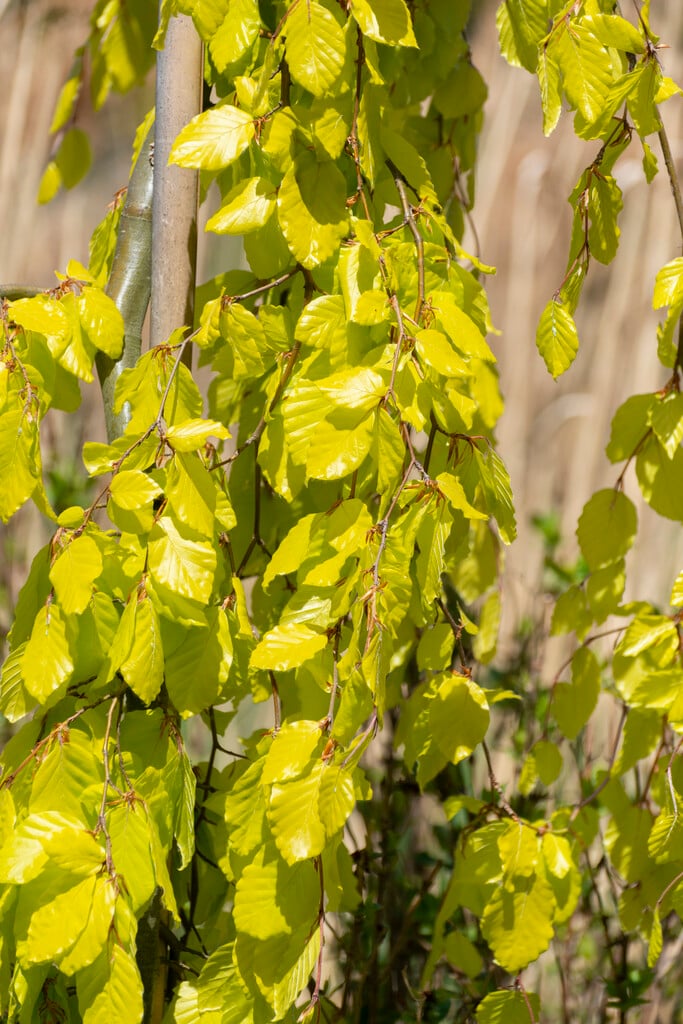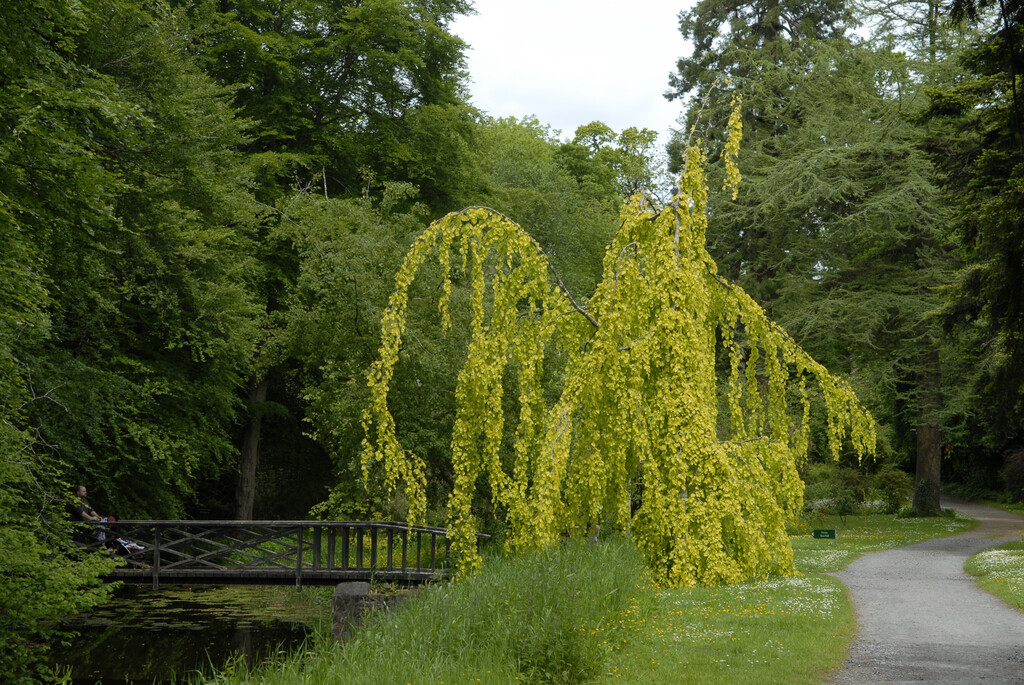Fagus sylvatica 'Aurea Pendula'
beech 'Aurea Pendula'
Slow-growing, large, graceful tree with a weeping habit and large, oval leaves which emerge golden-yellow in the spring, maturing to yellow-green in summer and then to copper-yellow in autumn. Inconspicuous flower catkins are followed by spiny fruits. A suitable tree for large parks and woodland gardens
Size
Ultimate height
4–8 metresTime to ultimate height
20–50 yearsUltimate spread
2.5–4 metresGrowing conditions
Moisture
Moist but well–drained, Well–drainedpH
Acid, Alkaline, NeutralColour & scent
| Stem | Flower | Foliage | Fruit | |
| Spring | Gold Yellow | |||
|---|---|---|---|---|
| Summer | Green Yellow | |||
| Autumn | Brown Yellow | |||
| Winter |
Position
- Partial shade
Aspect
East–facing or North–facing or West–facing
Exposure
Sheltered Hardiness
H6Botanical details
- Family
- Fagaceae
- Native to GB / Ireland
- No
- Foliage
- Deciduous
- Habit
- Pendulous weeping
- Potentially harmful
- Pets (dogs): Harmful if eaten. For further information and contact numbers regarding pets, see the HTA guide to potentially harmful plants
- Genus
Fagus are large deciduous trees with smooth grey bark, ovate leaves colouring well in autumn, and inconspicuous flowers followed by usually spiny fruits
- Name status
Accepted
How to grow
Cultivation
Grows well in moist but well drained soil in dappled shade. Very prone to leaf scorch in midsummer if planted in a hot, sunny position. See beech cultivation
Propagation
Propagate by seed or grafting
Suggested planting locations and garden types
- Architectural
- Cottage and informal garden
- Wildlife gardens
- Hedging and screens
Pruning
Pests
May be susceptible to aphids and beech bark scale
Diseases
May be susceptible to beech bark disease, fungi (particulary bracket fungi) and powdery mildews. Sometimes susceptible to honey fungus
Love gardening
Sign up to receive regular gardening tips, inspiration, offers and more
View our Privacy Policy
Get involved
The Royal Horticultural Society is the UK’s leading gardening charity. We aim to enrich everyone’s life through plants, and make the UK a greener and more beautiful place.

